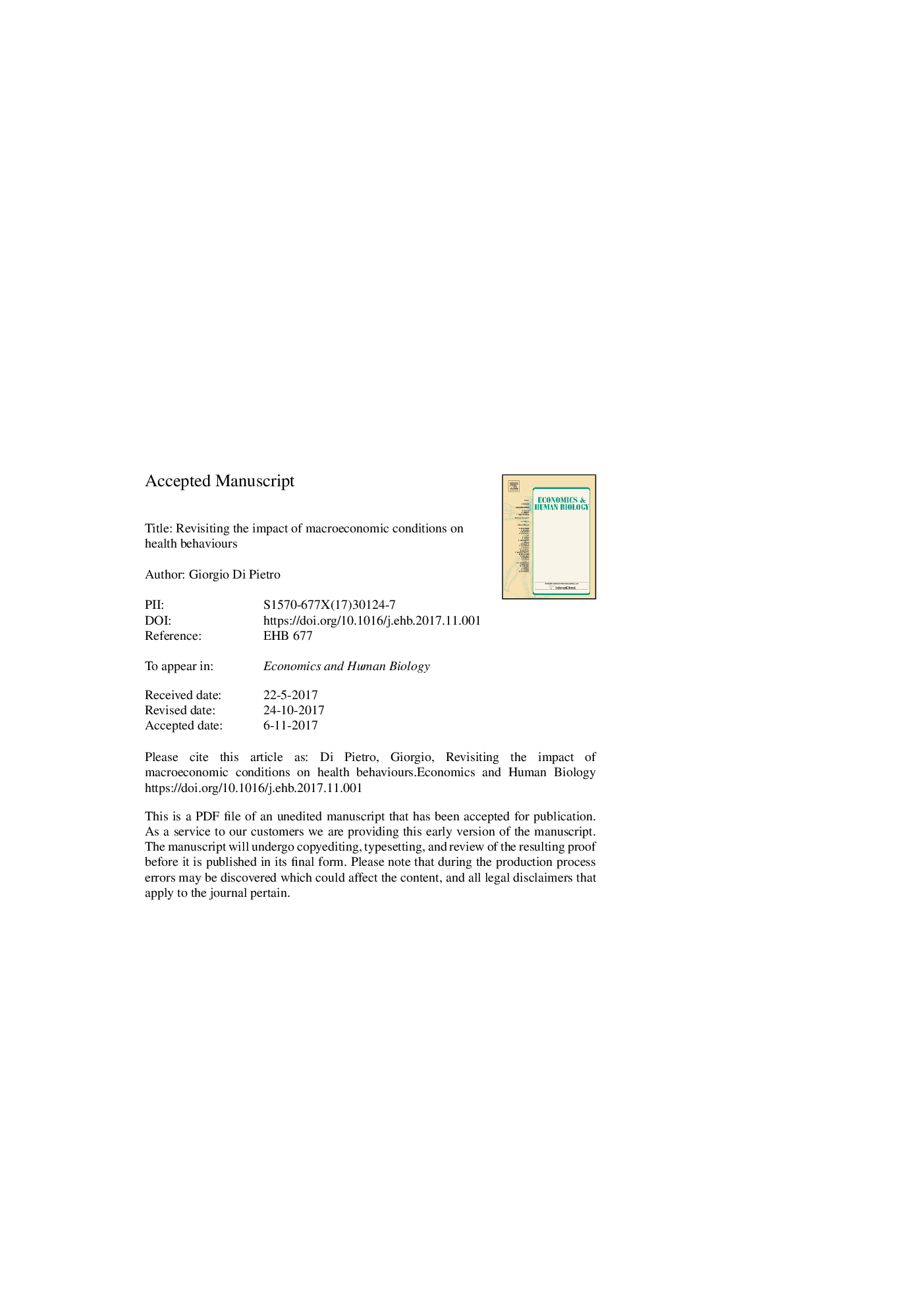ترجمه فارسی عنوان مقاله
بازبینی تاثیر شرایط اقتصاد کلان بر رفتارهای بهداشتی
عنوان انگلیسی
Revisiting the impact of macroeconomic conditions on health behaviours
| کد مقاله | سال انتشار | تعداد صفحات مقاله انگلیسی |
|---|---|---|
| 90244 | 2018 | 32 صفحه PDF |
منبع

Publisher : Elsevier - Science Direct (الزویر - ساینس دایرکت)
Journal : Economics & Human Biology, Volume 28, February 2018, Pages 173-181

